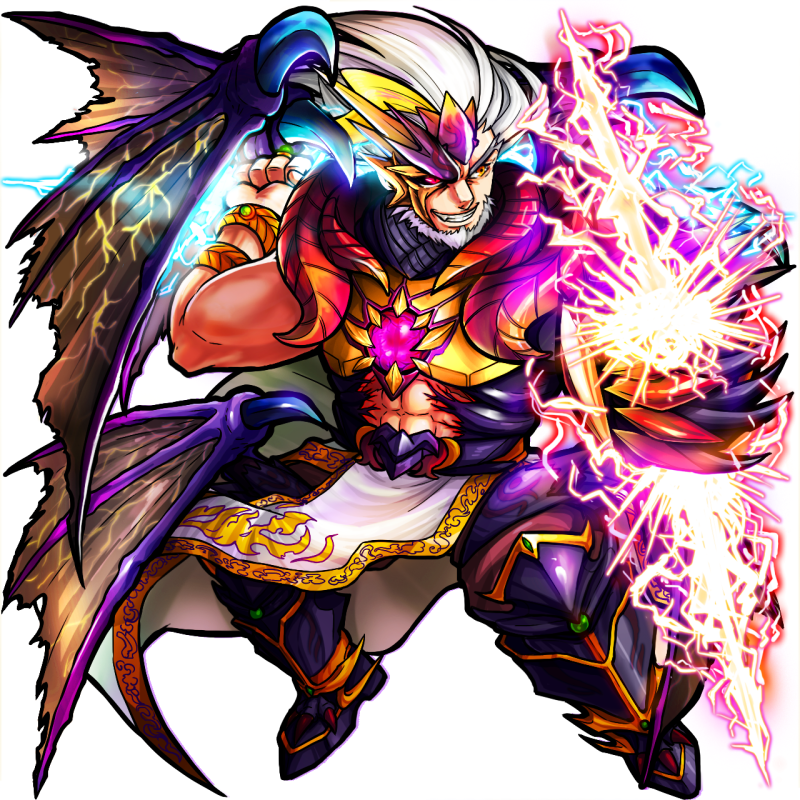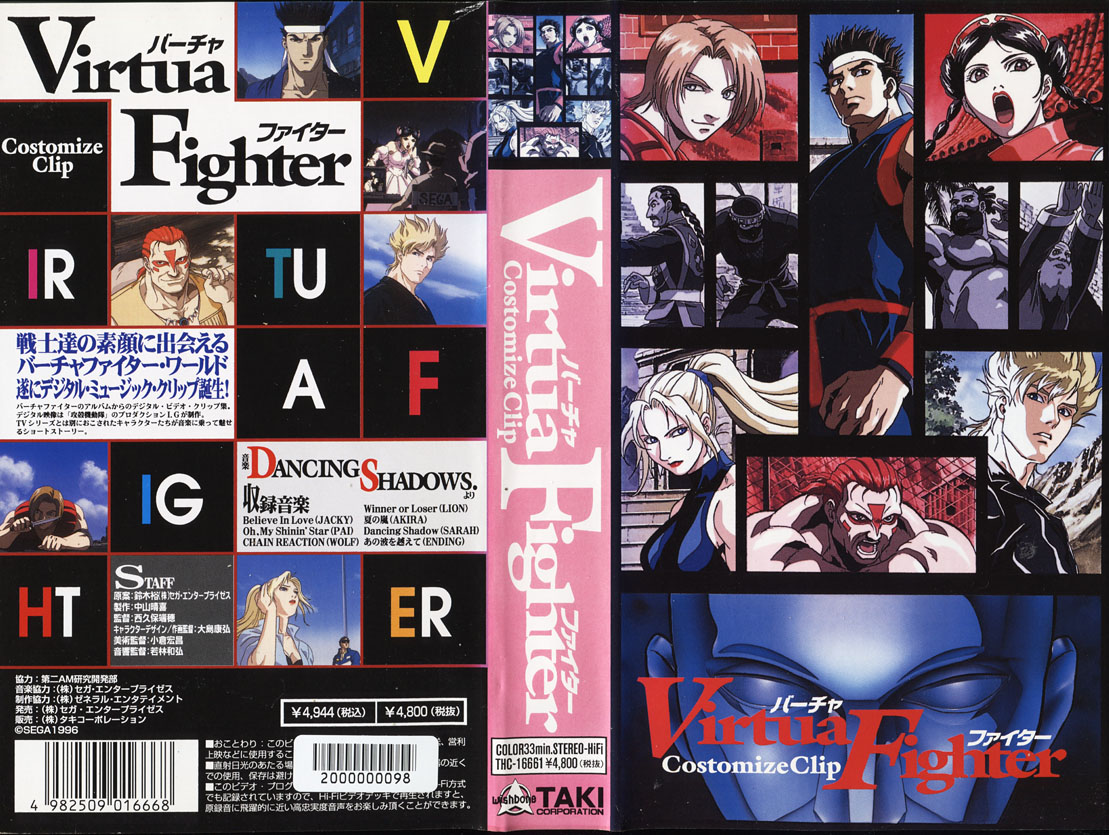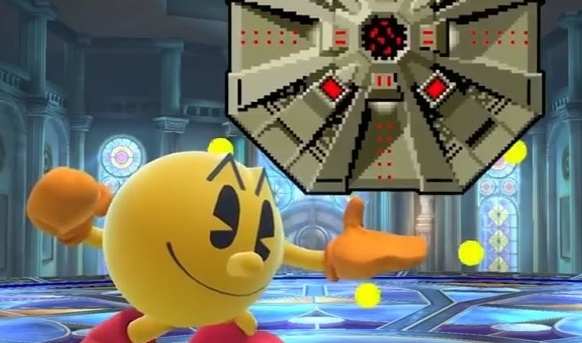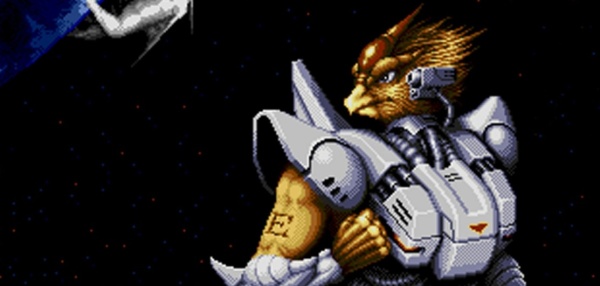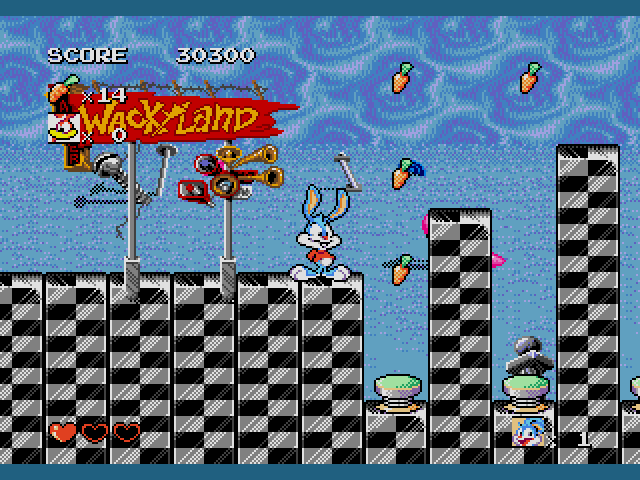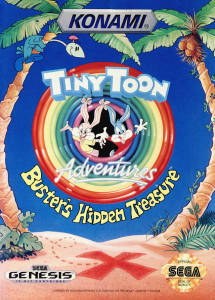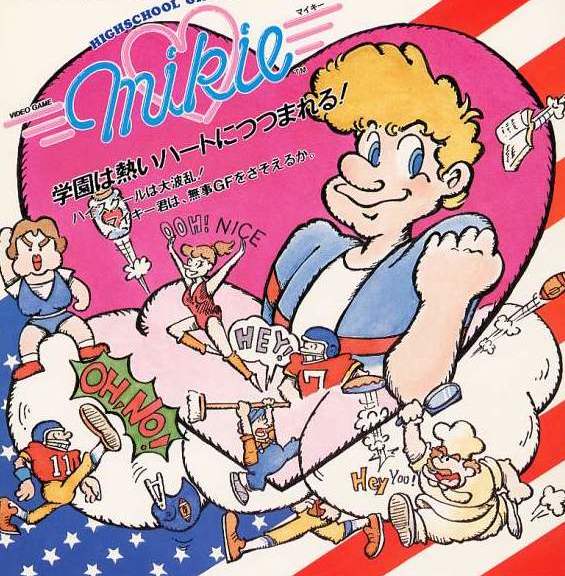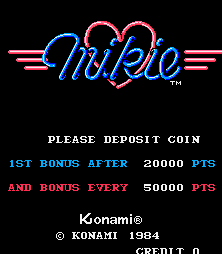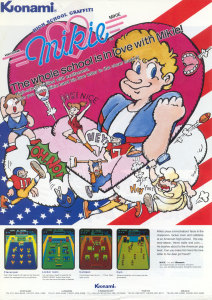There’s a superb feature on Polygon today about the collapse of THQ, and I highly recommend that everyone read it. With all this new info about THQ’s inner workings circulating the internet, I feel like it’s time to re-share a little story of Veteran Games Journalism that I posted on tumblr a while back. Here, for your reading enjoyment, is a small account of my experience with tragic-in-hindsight company wastefulness, which I originally wrote in early 2012.
Author: Heidi Kemps
Interview: Yoshiki Okamoto, Michael Oakland, and Koki Kimura
The Japanese App Stores are a battlefield: the top grossing free-to-play apps rake in millions every day for their respective producers, jockeying for status and position on the charts, while thousands of others peter out after a few months or maintain a small but eagerly supportive audience. Others never even get off the ground – remember that Street Fighter card game? It went into beta around this time last year and nothing has come of it since. The freemium market might look like easy (or even greedy) money to a casual observer, but it’s actually a far harder nut to crack than most folks might think.
Monster Strike, a game which has been in a heated war with Puzzle and Dragons for top-grossing Japanese app for months, is noteworthy not only because it’s been such a huge hit in a very, very tough market, but because it’s something of a redemption story. Publisher Mixi operated a once-dominant social network in Japan that, in recent years, was rapidly losing ground to competitors like Facebook, Line, and Twitter – only to see business take a dramatic upwards turn as people picked up the game. The game’s designer, one Yoshiki Okamoto, is a man responsible for numerous classics at companies like Konami and Capcom, practically defining the late-80s-early-90s arcade legacy of the latter. Okamoto’s previous studio, Game Republic, suffered a terrible collapse after deals with western developers tanked, leaving them with massive debts that AAA development budgets require. Okamoto has now sworn off console development entirely, focusing strictly on mobile – thanks to Monster Strike’s roaring success. It might seem tragic at first, but knowing just how badly he got burned – and seeing just how fun Monster Strike is1 – Okamoto finding a new path and purpose in game development is actually a very happy story indeed.
I had an opportunity to talk with Okamoto and Koki Kimura, a producer at Mixi, about Monster Strike, along with Michael Oakland of Mixi’s localization team. We talked about the game and the ideas behind it, engaging in a lot of silliness in the process.
Obscure gaming anime: Virtua Fighter Costomize Clip
A lot of folks are aware that I am a giant supernerd for Sega-AM2, and their fighting games in particular. Besides owning entirely too much stuff related to Virtua Fighter and Fighting Vipers, I collect various factoids and trivia about the games in an important area of my brain most people would reserve for something like remembering the names of their relatives. One such factoid has been the existence of a Virtua Fighter OVA released in 1996 by Production I.G., a 30-odd-minute outing that’s completely separate from the more well-known TV VF anime by Studio Pierrot. Called Virtua Fighter Costomize Clip, it was released in 1996 in very limited quantities, and it’s so unknown that even Anime News Network’s otherwise comprehensive catalog lacks any information about it.
I’ve been actively seeking a VHS copy out for a while (along with more chapters of Virtua Junky, a mid-90s manga about people playing Virtua Fighter 2), but actually obtaining a copy, even through a proxy, has proven extremely difficult. However, it was recently brought to my attention that the whole thing is now up on Youtube in a VHS rip. I’m not quite sure how I missed it for so long (maybe because I was looking under what its correct English spelling should be, “Customize Clip”?), but what matters now is that it’s found and oh my lord is it ever a nostalgia trip to the height of VF’s mid-90s popularity.
Let’s watch it together, shall we?
Book review: Shigeki Toyama Works Artworks Volume by Zekuu/circle Game Area 51
First off, I apologize for this review taking so long – I haven’t been in the best of physical health this week, and that combined with the craziness of family obligations over the holiday weekend meant that I couldn’t update the site as I wanted to. I’d intended to have this up around last Monday or so, but those plans came crashing down fairly quickly. I don’t want to disappoint gaming.moe supporters with a lack of site content, but alas, sometimes real life foils even the best-laid plans. I’m working on a manner of contingency plan for the next time such a thing happens. Anyhow, on to the main piece!
A while back I wrote a piece for WIRED about the subsection of the Japanese doujinshi subculture that caters to gaming devotees. Part of the reason why doujin fascinates me so much is because of the sheer variety of stuff people create under the term, and the fact that there are other extremely passionate nerds self-publishing books about all manner of delightful gaming minutae makes me very happy indeed. I interviewed a publisher under the name Zekuu for the piece, as his circle, Game Area 51, does some of the most impressive and in-depth doujin publications on retrogames and important people involved with their creation. Thanks to his work, I’ve become more aware of the contributions of many creators to games and companies that have notable places in gaming history.
Such is the case with Zekuu’s books about Shigeki Toyama, who has a lengthy history at Namco. I was mostly unfamiliar with Toyama’s contributions to gaming, but the two volumes of doujin Zekuu published – two interview books and an artbook – have taught me a great deal about the man who designed Mappy, the iconic graphical imagery of Xevious, and several arcade cabinets and logos. He was also a robotics designer, helping create everything from small animatronics to massive amusement attractions (such as the gigantic Galaxian³ setup at the Osaka Expo in 1990). Later, he’d also be a key contributor to the design of Sony’s AIBO robot dog. After learning so much about everything Toyama had helped create, I found myself filled with a profound respect for his incredible talent. (And, to be honest, I felt a little bit embarassed that I hadn’t properly recognized it sooner.)
Out of the three books, I chose this one for review because it’s largely art-based – and since I’m writing for a primarily English-speaking audience, it doesn’t really do folks much good to recommend an interview book in Japanese. It’s 242 pages long, B&W, and contains a truly astounding amount of design material for some of the coolest, most ambitious stuff that Namco ever produced. Without further ado, let’s look over….
 Shigeki Toyama Works: Artworks Volume (Toyama Shigeki Sakuhinshuu: Artworks Hen)
Shigeki Toyama Works: Artworks Volume (Toyama Shigeki Sakuhinshuu: Artworks Hen)
Cover image: A sampling of titles Toyama’s talent has touched
Libble Rabble (Namco, arcade, 1983)
Like many folks in the games media, I got a copy of Super Smash Bros. for Wii U a few weeks before it released to the public. Priority #1 was unlocking as much stuff as I could (A task that’s proven surprisingly tough – I’m still missing a few stages), particularly the extra stages and music. Among the unlockables is Pac-Land, which is an extremely cool stage with a lot of neat implementations of the progression and hazards found in the original arcade game.
Pac-Land, however, doesn’t include the original Pac-Land theme, probably because of rights reasons (it’s a chiptune version of the old Hanna-Barbera Pac-Man cartoon theme song). There’s no shortage of songs to pick from in the stage, though, and among them is a medley of music from something called Libble Rabble.
I’m pretty sure most folks outside of Japan are going to look at this and just say “Libble Rabble? What the HELL is that?” If you’re here, however, you more than likely took that next step of actually attempting to find out what the hell Libble Rabble is. Well, folks, I’m here to tell you all about it. Get your magic ropes ready, ’cause we’re going to take a good look at Namco’s beloved-among-devout-Japanese-retrogamers-but-utterly-unknown-in-the-West arcade cult classic.
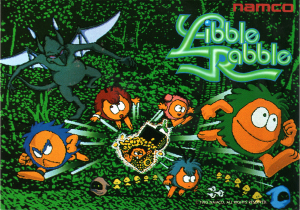
Gaming.moe newspost: Podcasts, bandwidth, and what’s coming soon
So hey folks! It seems that interview with Mr. Jerauld was extremely popular! I’m glad so many people liked it, and it makes me all the more excited to pursue further interviews of other interesting gaming figures for this site.
The only problem is that the interview was so popular that I’ve now used 75% of this month’s bandwidth for the site within the last few days. Eep! Looks like I’ll have to upgrade the hosting plan much sooner than I expected. While site growth is a good thing, it does require a substantial amount of time and effort to create the articles you see on here. Not to mention the costs involved with hosting and upkeep. So if you like what I’m doing and want to support more unique, independent game writing from me, please do consider contributing via Paypal or supporting our Patreon. Every little bit helps a lot!
Besides that, things are going well: My next feature-review-type-thing, a look at Namco’s Libble Rabble, is coming along nicely, and I got a fantastic new book to review over the weekend. Everything I mentioned in the previous newspost is still in the works in varying states of completion. It’s pretty common of me to have numerous ideas for things to write about at once, it’s just a matter of what I feel compelled to write about most at that time. (For example: I’m still doing the Terra Battle review, I just hit a bit of a block with it and want to spend more time with the game itself before I come back to it.)
What else has been going on? Well, I’ve been making the podcast rounds a fair bit. I was on the TinyCartridge TinyCast to talk about subjects as varied as Amiibos, Rodea the Sky Soldier, Sega 3D Classics, and of course, this site. (also: Soap shoes.) Later this week, I’ll be joining the Anime News Network ANNCast for an overview of the year in gaming. Set your podcast apps in those directions and have a listen!
Other professional freelance writing stuff I’ve done recently: I wrote a Tales of Hearts R review for GameSpot that should be going up any day now. If you live in Australia, I wrote about Puzzle and Dragons for the HYPER magazine mobile gaming special, too.
So yes, we’re definitely keeping busy here! We’ve had a great first month of existence, and I’m glad you’ve come along for the ride. Here’s to many more months of gaming.moe!
Interview: Robert Jerauld, former producer at Enix USA
Before there was Square-Enix, there was Square and there was Enix, two Japanese publishing houses well known for their RPG output. During the heyday of the SNES, both companies had a US presence based out of Redmond, Washington, where they published some of the most beloved games of those eras. The inner workings of Enix USA during that time, however, have always been the subject of much rumor and fan speculation. What happened to localizations of Dragon Quest V and VI, Enix’s flagship franchise? Why did Nintendo publish Illusion of Gaia? And how did King Arthur and the Knights of Justice wind up the way it did? Is there really an Ark of the Covenant? Will we ever find Noah’s Ark? Where exactly is Atlantis and did Amelia Earhart land there? Are we alone in the Universe…
Ahem. I had the opportunity to talk to Robert Jerauld, producer during the first incarnation of Enix USA on all titles titles throughout the NES/SNES’s life. Robert’s early career trajectory took him from working as a Nintendo Game Counselor to working many roles on some of the most beloved games on the platform. Robert continues to work in the game industry to this day – he is currently an Executive Producer at Microsoft Game Studios, with credits on games like Zoo Tycoon, Gears of War, and Alan Wake. I am incredibly thankful and excited that Robert took the time to talk about his experience at Enix USA with us. Read on for a fascinating look of what Robert’s time at Enix USA was like!
Play it Again for the First Time: Buster’s Hidden Treasure (Konami, MegaDrive, 1993)
An experience I think many have had is revisiting a game that we had memories of playing in our youth. While we all had those games that we had essentially memorized – I know stuff like Super Mario Bros. 3 and Sonic 2 so well that the ten-year-old me in my head gets actively angry when I see people not taking bonus-optimized paths through them – there are others where the memories are a little more vague. We enjoyed them at the time, but we’ve essentially forgotten the vast majority of the experience, to the point where replaying the games is like enjoying something completely new. Sometimes it’s a harsh lesson in reality, as you find out that game from your youth was utter garbage you liked because you were young, dumb and ate up anything with your favorite characters on the box. Other times, you find yourself rediscovering what you enjoyed so much, and perhaps even appreciating these titles in a brand new way through the eyes of experience.
So there’s a series of podcasts and media under the collective banner of Laser Time that I’m fond of. Most of the folks doing shows and articles there are previous or current employees of Future Publishing (whom I’ve done a fair bit of professional work for), who run the show as a way to talk about interesting pop-culture things and their own subjects of interest with friends they came to connect with through work. Laser Time manager Chris Antista recently did some stuff about Tiny Toon Adventures videogames, highlighting the many titles Konami (and others) published with the license. Among them is the Genesis/MegaDrive entry, Buster’s Hidden Treasure.
Buster’s Hidden Treasure was actually among the first games I got for the Genesis, and I remember spending way too much time defending it against my SNES-owning friends who insisted on the superiority of Buster Busts Loose as a game. It wasn’t uncommon in the 16-bit era for different platforms to get entirely different titles in a franchise or license, and Konami in particular made very, very different games for the SNES and the MegaDrive. So since you couldn’t argue over which had the better framerate or textures, you had to fight over what game was actually better, and boy did I fight tooth and nail for this one. But was I actually right, or was I just doing my duty as a pre-adolescent console warrior?
I wanted to find out. I played Buster’s Hidden Treasure again, and I’ve got a fair bit to say about it 20-some years later.
Game music highlight: Outrun and Turbo Outrun
So the time change happened here in the USA this weekend, and like many folks subjected to Daylight Savings Time, the combination of bio-schedule disruption and winter shift to having less sunlight during the day makes me rather moody. Not to mention how cold it’s suddenly getting! Fortunately, we all have videogames and their blue, blue skies to make up for the seasonal loss of sunlight, and there’s no bluer skies than those of Sega arcade games! And what Sega arcade game is filled with blue skies, sandy beaches, and hot cars? All-time classic Outrun, of course!
The recent announcement of Outrun coming in the second wave of North American 3D remastered Sega classics put a big smile on my face, because now I’ll be able to go for joyrides wherever I want in beautiful stereoscopic 3D. Not only that, but I’ll have yet another outlet to listen to Magical Sound Shower through!
Outrun, along with Space Harrier and After Burner (II), is one of the all-time classic soundtracks from the old Sega S.S.T. Band (now called H.). Hiroshi Kawaguchi was the maestro behind all of these scores, and he’s still kickin’ it as the veteran of Sega’s sound team.
Personally, I put Outrun’s tunes into two tiers: “Magical Sound Shower” and “Other Songs That Are Pretty Good I Guess But Why Would I Choose To Play Them Instead of Magical Sound Shower.” All of the songs from the game have been remixed and redone over time, most notably getting a modern makeover in the recent arcade and console updates for Outrun. These are all pretty fantastic, as well, but only Magical Sound Shower got the Hatsune Miku treatment in the Project Diva titles. It’s probably my favorite version of the tune.
One of the game music trends that I’m really, really sad kinda died around the early 90’s was the existence of named company music teams that would put on live shows and events. You had Zuntata (Taito), the JDK Band (Falcom), S.S.T. Band (Sega), Alph Lyra (Capcom), Gamadelic (Data East), and others that are probably skipping my mind. JDK Band is the only one that still really exists in a form like it used to have – most of the old Zuntata crew went off to do solo stuff, Alph Lyra just kinda petered out, and Gamadelic died along with Data East. While you still have some live game music events, they’re usually either medleys or planned for a composer or series rather than encompassing the works of a whole company with a rock-concert-like flair.
Why am I talking about this? Because I want to show you this awesome clip of a live S.S.T. Band performance of Magical Sound Shower from 1989, that’s why! Get a load of that atmosphere and the enthusiasm. I really, really feel like I missed out with never having had the opportunity to go to one of these.
http://youtu.be/StfJKKTLOqc
EDIT: GSK linked me to a video of the late, great Kenji Eno, along with Sega musicians Tomoko Sasaki and Naofumi Hataya, performing Magical Sound Shower at WARP’s booth at Tokyo Game Show 1997. It’s really, really good, to the point where I’d be remiss if I didn’t add it in! (Also awesome: Jun Senoue was the guy who provided the upload!)
So yeah, Magical Sound Shower is great, a true classic piece of game music. But you know what? It’s actually not my favorite piece of Outrun music. Yeah, it’s my favorite piece from the original Outrun, but my personal most-beloved Outrun tune actually comes from 1989’s Turbo Outrun. Rush A Difficulty is a tune with a delightfully memorable Engrish title that plays for the first portion of the game, and it’s absolutely fantastic.
Why do I like it more than Magical Sound Shower? Well, I think it conveys actual the feeling of racing and speed more effectively. You hear this and you know damn well it’s videogame driving music. It’s fast, it’s upbeat, and it’s got a catchy but complex melody that gets you pumped just thinking about it. Now that’s what I call game music! Alas, it’s a lot harder to find alternative/remixed versions of this song, but I’m still pretty darn happy just having the original to listen to. Maybe we can convince Takenobu Mitsuyoshi to slap lyrics on it someday. Ah, a girl can dream…
Mikie (Konami, arcade, 1984)
One of the best thing about the early-80s worldwide arcade boom was the sheer creativity exhibited in the concepts. The youth of the gaming medium meant that developers would try anything and everything looking for the next megahit. I mean, yeah, there were definitely a lot of alien-shooty spaceship games, but there was also stuff that you’d have a hell of a time trying to pitch to corporate higher-ups nowadays. (“I mean, yeah, the space marine FPS is a safe bet, but I’ve got something even cooler! Imagine a game where you’re fighting against another guy, with a lance, and you’re riding an ostrich, just kind of flapping around this weird space-time void! Wouldn’t that be awesome? It’ll sell MILLIONS!”)
Technical limitations also forced games to veer away from realism into realms of strangeness and abstraction. Even games that had a setting based in some matter of reality would have to rewrite “rules” in order to make them into something that would make a (theoretically) fun game. Clearly this was the problem facing the Japanese programmers at Konami when they decided they wanted to make a game about American high school life. Not only did these guys have zero actual experience in American high schools, but what the hell kind of game could you make out of that? After much deliberation, it was decided to focus on the major element of high school everyone remembers: terrible people in highly visible and obnoxiously dramatic teenage relationships.
So now, let’s take a look at this very early Konami arcade game, one that puts us in the shoes of Mikie, high school asshole extraordinaire.
